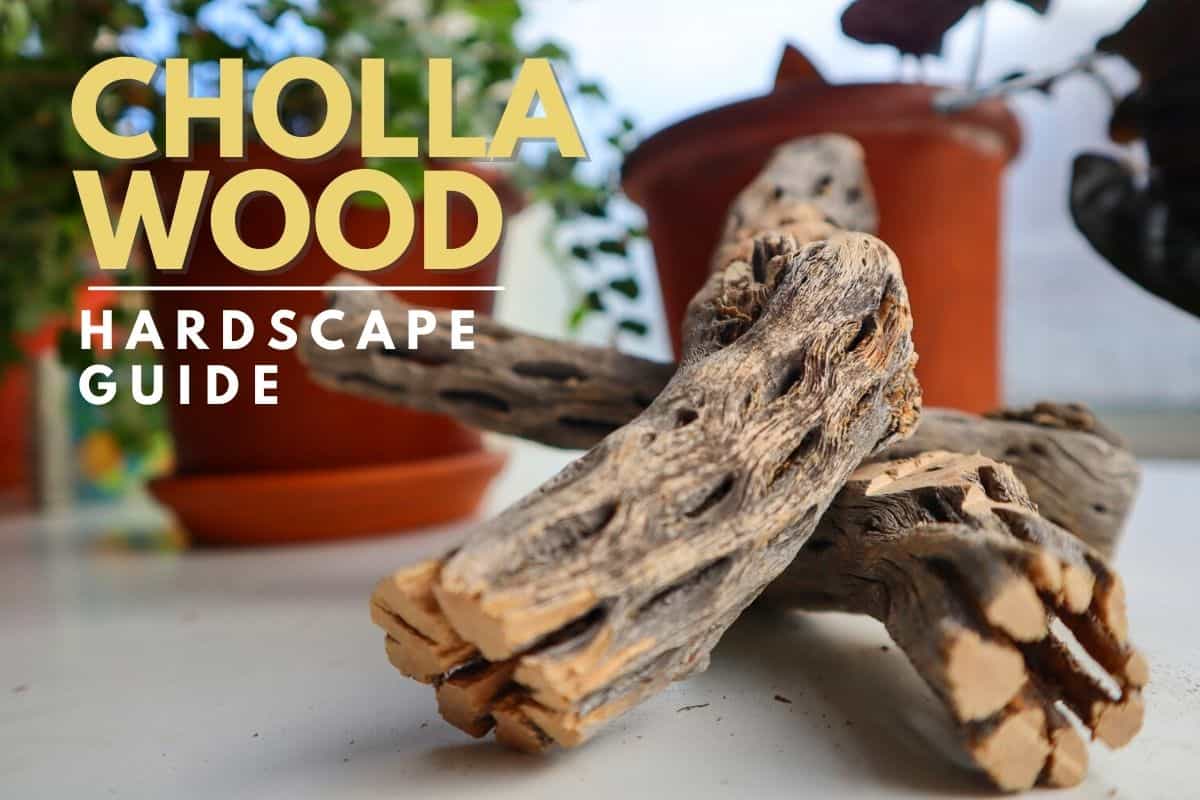There’s nothing quite like cholla wood.
Miniature gnarled logs, perforated with lots of irregular holes – it may be empty on the inside, but it’s full of character!
Truly, this exotic driftwood has a host of uses in the terrarium and vivarium world, but its special nature isn’t for every project.
In this article, you’ll find out where cholla wood really shines and how to use it.
Let’s go.

Terrarium Tribe is reader-supported. When you purchase through links on our site, we may earn an affiliate commission (at no further cost to you). 💜
What is Cholla Wood?
Where most driftwoods come from tree branches and roots around the world, cholla wood is actually the skeletal husk of the cholla cactus.
Native to the deserts of Mexico, there’s a range of cholla species (Cylindropuntia).
Some plants in the genus can even be grown as houseplants! Though, I don’t think the wood is a legitimate way to immortalize an old cactus friend…
Naturally, the cholla cactus can grow large and form some irregular shapes. This is what gives cholla wood such uniquely interesting qualities. Each holey column bears the characteristics of its former plant host.

If you need a tall winding trunk or a short barrel branch – there’s likely to be a perfect cut if you can find it.
Depending on the source and age, the colors vary from pale browns and greys to warmer reddish hues.
Cholla Wood Uses and Benefits
1 | A Bioactive Source of Nutrition
Cholla wood is often categorized as a softwood. Meaning it will degrade over time in a moist environment.
Surprisingly, that is the benefit!
The positive here is that the wood creates a biofilm as it breaks down. This nutrient-rich biofilm can used as a food source for all manner of microfauna.
The downside is that decomposing wood is a potential liability if not treated properly. Realistically, it must be consumed by something as it breaks down, or mold can become a hazard.
That’s why Cholla Wood is best in bioactive terrariums.
As it breaks down, it can provide slow-release organic compounds for your microfauna cleanup crew (of helpful terrarium insects) to feed on – further seeding the environment.
👉 Shop cholla wood on our store.

Of course, in an arid terrarium, this isn’t a problem. The wood comes from the desert, after all.
In an aquarium, it’s commonly recommended to change your Cholla Wood after about two years. So this can give us an idea of how often you might have to change it in terrariums (though I’d expect it to last longer)
2 | A Habitat for Animals
Whether you’re adding Cholla Wood to a terrarium, a paludarium, or (more commonly) an aquarium, all manner of creatures can use it.
The larger trunk sections can have quite a large, hollow center. Which makes a great hiding spot for reptiles, fish, and crustaceans.
Or, the column itself is a lovely natural-looking perch in a tropical landscape. Particularly when it’s adorned with epiphytic plants and dripping in moss.
Maybe that’s just me?
3 | A Mount for Epiphytes
With the full lattice of holes – all in different sizes – cholla wood presents a diverse selection of planting opportunities.
Each is a little pocket in which epiphytes can be securely placed (or, more likely, glued – let’s be honest). It’s common practice to bundle the roots in with some sphagnum moss and then secure it to the wood.
Of course, the plant choice will depend on the conditions of your tank and the size of the cholla wood branch (bigger is better here):
- Semi-aquatic plants like Bucephalandra or Anubias can thrive both submerged in an aquarium or epiphytically in a terrarium. They look best when paired with a vibrant moss, e.g., Java Moss (which can also work in both).
- Alternatively, Air plants are a popular choice that can be used to great effect in arid and tropical terrariums alike.
Types of Cholla Cactus Wood
Cholla Cactus come in all shapes and sizes, so naturally, you can expect a lot of variation in the wood.
As far as I can tell, they all seem to be labeled the same (so there’s not much you can discern from product titles alone), but it’s worth scrutinizing the images and descriptions as best you can.
This is important because the shapes/sizes somewhat dictate what you can do with them.
If you want a nice hollow cylinder with plenty of room and planting opportunities, you’ll have to buy one of the larger branches. It’s sometimes referred to as “Teddy Bear Cholla.”
The smaller branches are sometimes so thick that there’s little to no room on the inside.

How To Clean Cholla Wood
As with all driftwood, it’s a good idea to give it a clean before adding it to any setup.
You can never be certain what chemicals (or creatures) it may harbor – especially in wood as porous as this one.
It also helps to remove some of the tannins which can leach into the water. Not as much of a problem for terrariums as it is for aquariums, but it can’t hurt.
The easiest way to prepare Cholla Wood is to simply boil it in a pan of hot water.
Honestly, it needn’t be for a long time. 5-10 minutes should be enough to kill any bugs. Any longer, and you risk weakening the structure of the wood.
If your piece of Cholla Wood is too big to boil, I’d give it a good scrub with a toothbrush and soapy water.
Over to You
Cholla Wood is a versatile hardscape material once you know how best to use it.
How have you incorporated it into your designs? Let us know in the comments.
Or check out the other great types of terrarium driftwood!
